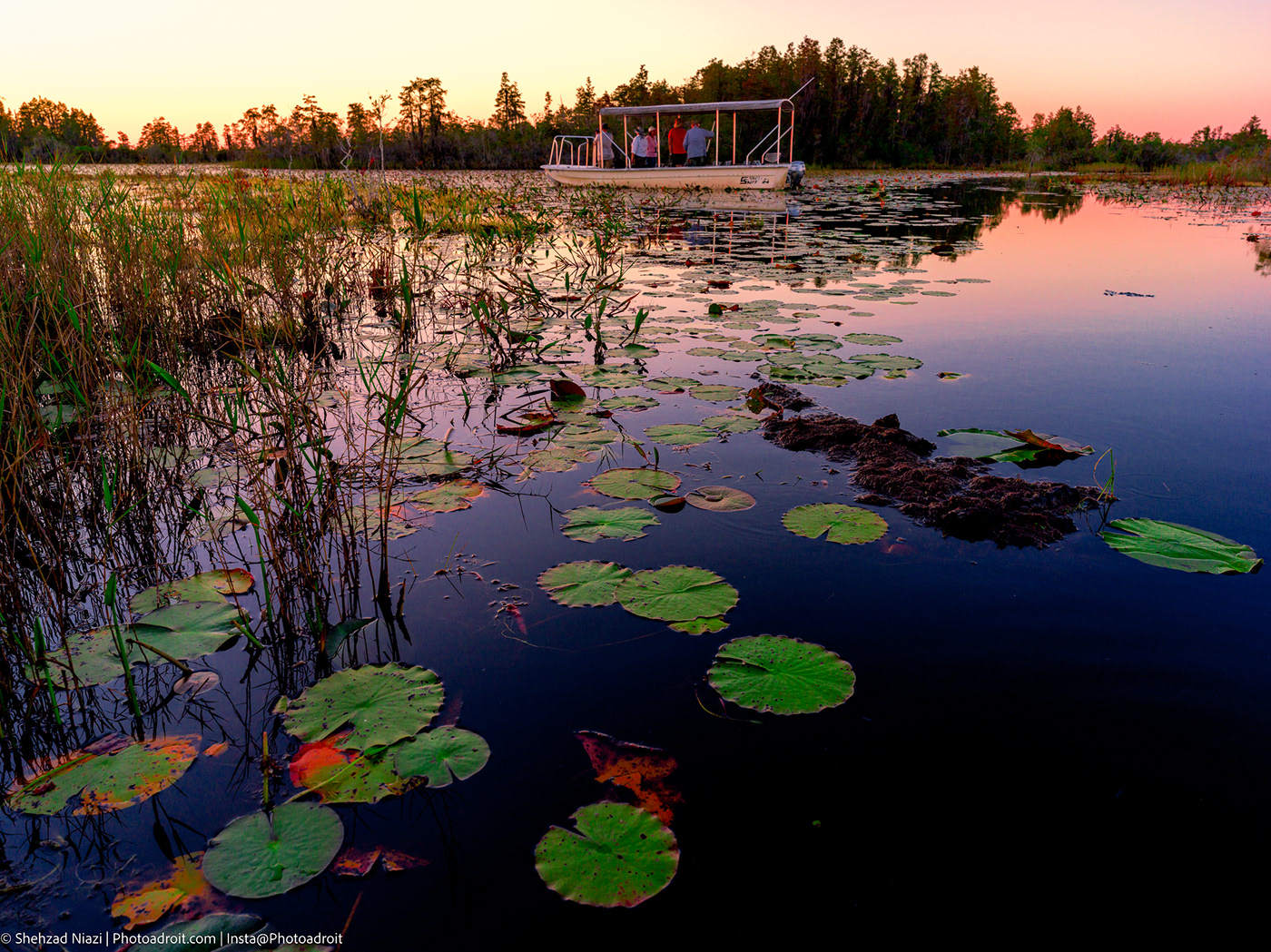Here is Okefenokee swamp, full of pathless, seamless, peerless mud.


Okefenokee National Wildlife Refuge is so unique that it is on the list to become a World Heritage Site. It contains 353,981 acres of National Wilderness Area within its expansive boundaries and is home to the headwaters of both Suwannee and St Mary’s rivers and the Okefenokee Swamp.



Swamps are lakes and ponds that decay and, over time, become a repository of the decomposing bodies and leaves of numerous trees and shrubs. The more the shrubs and trees die, the less and less the water level in the swamp. Lightness fades, and darkness ensues. Eventually, a shimmering lake or a pond overpowered by death and rot turns into a swamp. In the oxygen-deprived environs of the black waters of a swamp, the fallen vegetation decays very slowly and turns into peat. The decomposition must continue for fifty-three years to produce one inch of peat. Over the last 6500 years, peat formation in the Okefenokee swamp has deposited up to fifteen feet of peat in some areas. This peat stores 95 million tons of carbon and is the largest undisturbed deposit in the North American Coastal Plain. Peatlands are increasingly rare worldwide due to environmental changes and human activities. Most peatlands are found in colder climates and is very rare in temperate/subtropical climate. It is thus unique that peatland is preserved in Okefenokee thanks to the area’s protected status.



A poor
dry stick given
one more chance by the whims
of swamp water—a bough
that still, after all these years,
could take root,
sprout, branch out, bud—
make of its life a breathing
palace of leaves.
dry stick given
one more chance by the whims
of swamp water—a bough
that still, after all these years,
could take root,
sprout, branch out, bud—
make of its life a breathing
palace of leaves.
Mary Oliver. Crossing the swamp






The Suwannee Canal Company tried to emulate what this river does naturally. The company used a large contingent of convicted men and embarked on a misadventure to drain the swamp into the St Mary’s River. Their goal was to log the cypress trees in the drained area. They were convinced it would all work and paid $6,310,180 to acquire the 238,120 acres (963.6 km2) of land (https://en.wikipedia.org/wiki/Suwannee_Canal#cite_note-Trowell-1). Little did they know that the Trail Ridge – hundreds of feet tall – would thwart the company’s best-laid plans. No matter how much the company borrowed to finance the dig or how hard the harsh supervisors forced the convict labor to toil, the ridge held its ground. The ridge still stands, but the Suwannee Canal Company slowly decayed and entered receivership on June 1897. Like the swamp it attempted to drain, it matched the swamp’s origin story: it died and sunk. Just as the decaying matter resulted in a diverse ecosystem, the attempts to drain the swamp produced the current-day Suwannee Canal, which allows 600,000 people from forty-six countries who visit the Okefenokee Swamp each year.
https://www.fws.gov/sites/default/files/documents/OkefenokeeNWR_2022CombinedFactSheets_508.pdf
This canal is in the Okefenokee National Wildlife Refuge. On 1 October 1974 US government granted ninety percent of this area the status of National Wildlife Refuge. One must be cautious when venturing into this “land of the trembling earth,” as the Seminoles christened this place.


Here is the endless wet thick
cosmos, the center
of everything—the nugget
of dense sap, branching
vines, the dark burred
faintly belching bogs.
cosmos, the center
of everything—the nugget
of dense sap, branching
vines, the dark burred
faintly belching bogs.
Mary Oliver. Crossing the swamp














Equipment Notes:
Hasselblad CFVII 50c, 907X | XCD 30/3.5 | XCD 80/1.9
Canon EOS R5 | EF 300 IS 2.8ii
